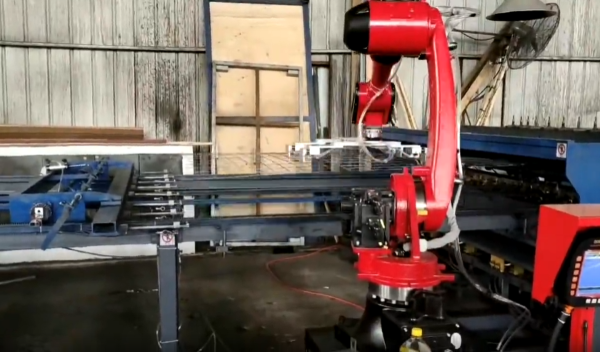1、 The basic composition of robots
The robot body mainly consists of the following parts:
1. Mechanical structure: The mechanical structure of a robot is its most basic component, including joints, connecting rods, brackets, etc. The design of mechanical structures directly affects the motion performance, load capacity, and stability of robots. Common mechanical structures include series, parallel, and hybrid.
2. Drive system: The drive system is the power source of the robot, responsible for converting electrical or hydraulic energy into mechanical energy, and driving the movement of various joints of the robot. The performance of the driving system directly affects the motion speed, accuracy, and stability of the robot. Common driving methods include electric motor drive, hydraulic drive, and pneumatic drive.
3. Sensing system: The sensing system is a key component for robots to obtain external environmental information, including visual sensors, tactile sensors, force sensors, etc. The performance of the sensing system directly affects the perception ability, recognition ability, and adaptive ability of the robot.
4. Control system: The control system is the brain of the robot, responsible for processing information collected by various sensors, generating control instructions based on preset control algorithms, and driving the driving system to achieve the robot's movement. The performance of the control system directly affects the motion control accuracy, response speed, and stability of the robot.
5. Human machine interaction interface: The human-machine interaction interface is a bridge for users and robots to communicate information, including voice recognition, touch screen, remote control, etc. The design of human-computer interaction interface directly affects the convenience and comfort of user operation of robots.

2、 The functions of robots
According to different application scenarios and task requirements, the robot body can achieve the following functions:
1. Motion control: Through the collaborative work of the control system and driving system, precise motion of the robot in three-dimensional space is achieved, including position control, speed control, and acceleration control.
2. Load capacity: Based on different application scenarios and task requirements, design robot bodies with different load capacities to meet the needs of various work tasks such as handling, assembly, and welding.
3. Perception ability: Obtaining external environmental information through sensing systems, achieving functions such as object recognition, localization, and tracking.
4. Adaptive ability: By real-time processing and analysis of external environmental information, automatic adjustment and optimization of task requirements can be achieved, improving the efficiency and adaptability of robots.
5. Safety: By designing safety protection devices and fault diagnosis systems, ensure the safety and reliability of the robot during operation.
3、 The development trend of robots
With the continuous progress of technology, robot bodies are developing in the following directions:
1. Lightweight: In order to improve the motion speed and flexibility of robots, reducing their weight has become an important research direction. By adopting new materials, optimizing structural design, and manufacturing processes, the lightweight of the robot body can be achieved.
2. Intelligence: By introducing artificial intelligence technology, robots can improve their perception, decision-making, and learning abilities, achieving autonomy and intelligence.
3. Modularization: Through modular design, the robot body can be quickly assembled and disassembled, reducing production costs and improving production efficiency. Meanwhile, modular design is also beneficial for improving the scalability and maintainability of robots.
4. Networking: Through network technology, information sharing and collaborative work among multiple robots are achieved, improving the efficiency and flexibility of the entire production system.
In short, as the foundation of robot technology, the composition and function of the robot body directly affect the performance and application of the robot. With the continuous development of technology, robots will move towards lighter, smarter, more modular, and more networked directions, creating more value for humanity.

Post time: Jan-22-2024








